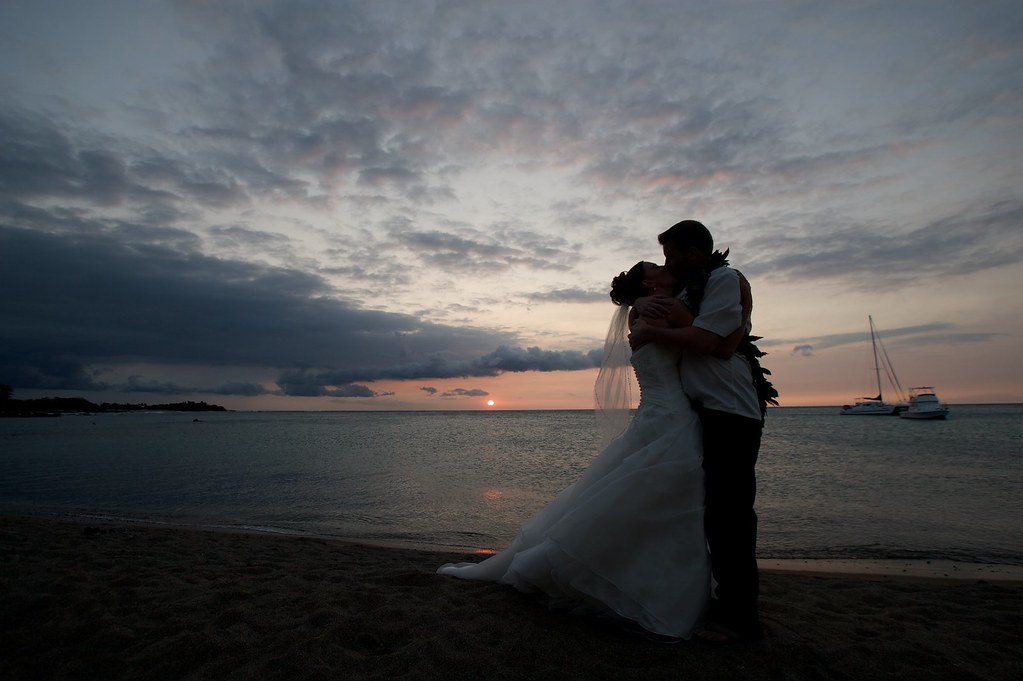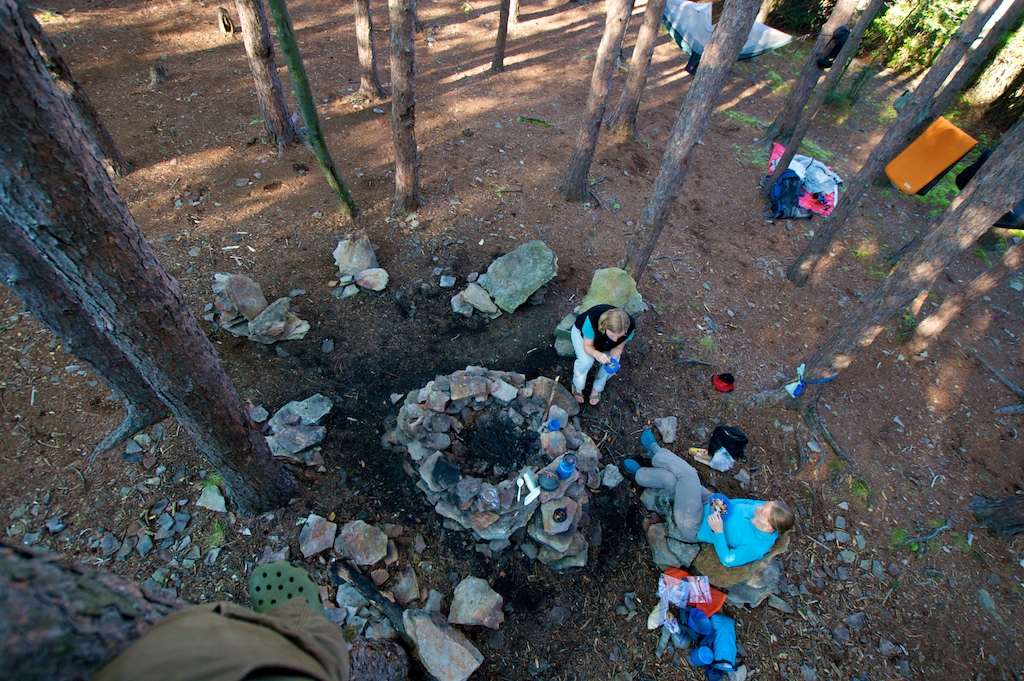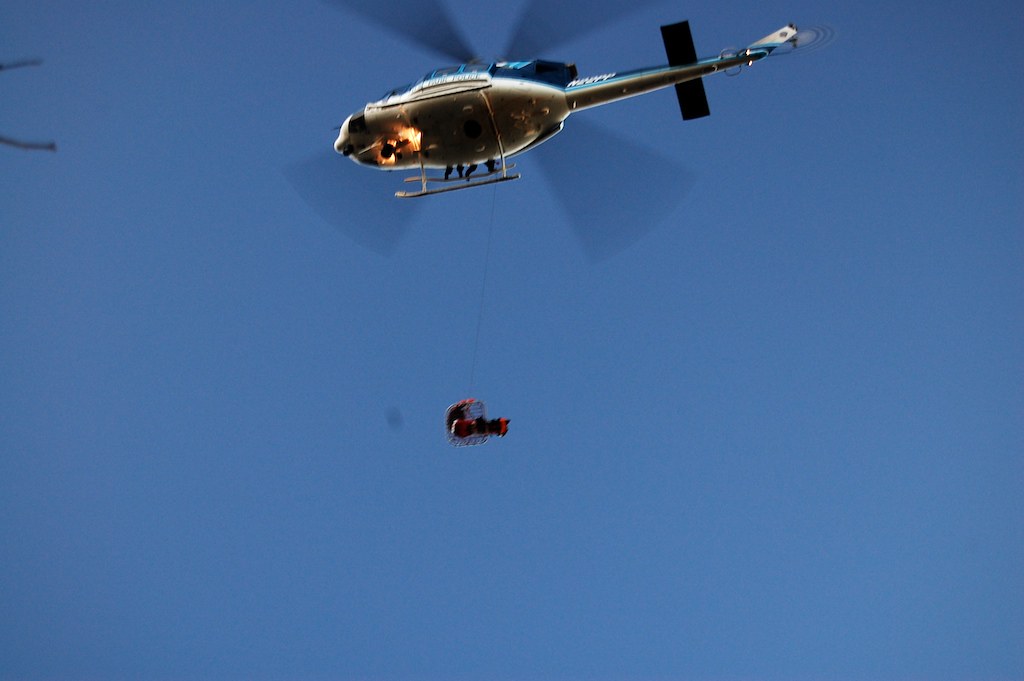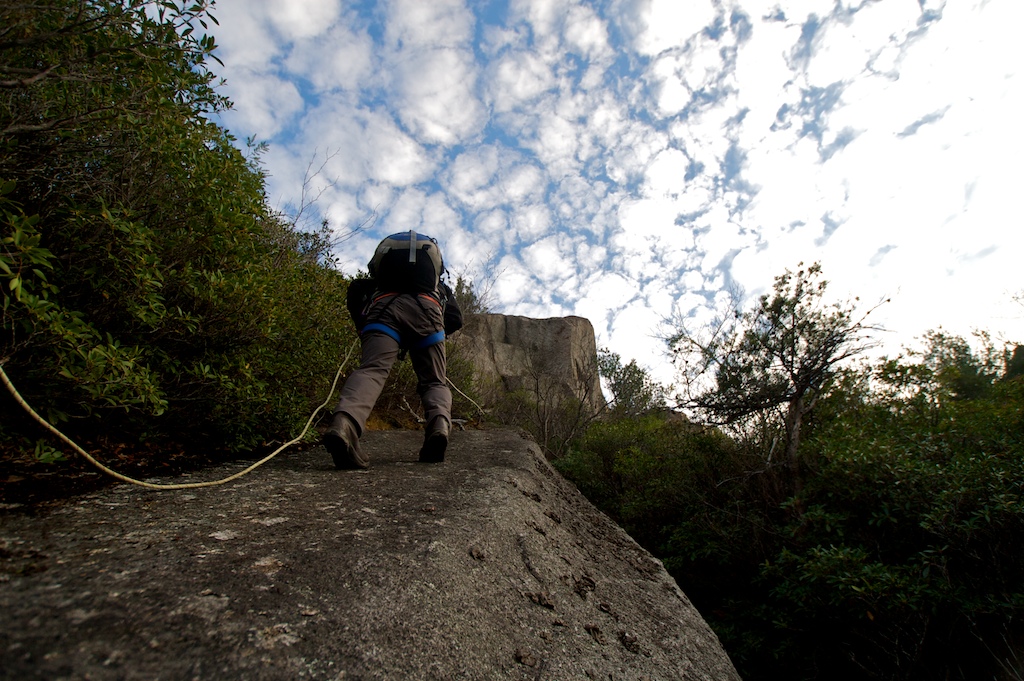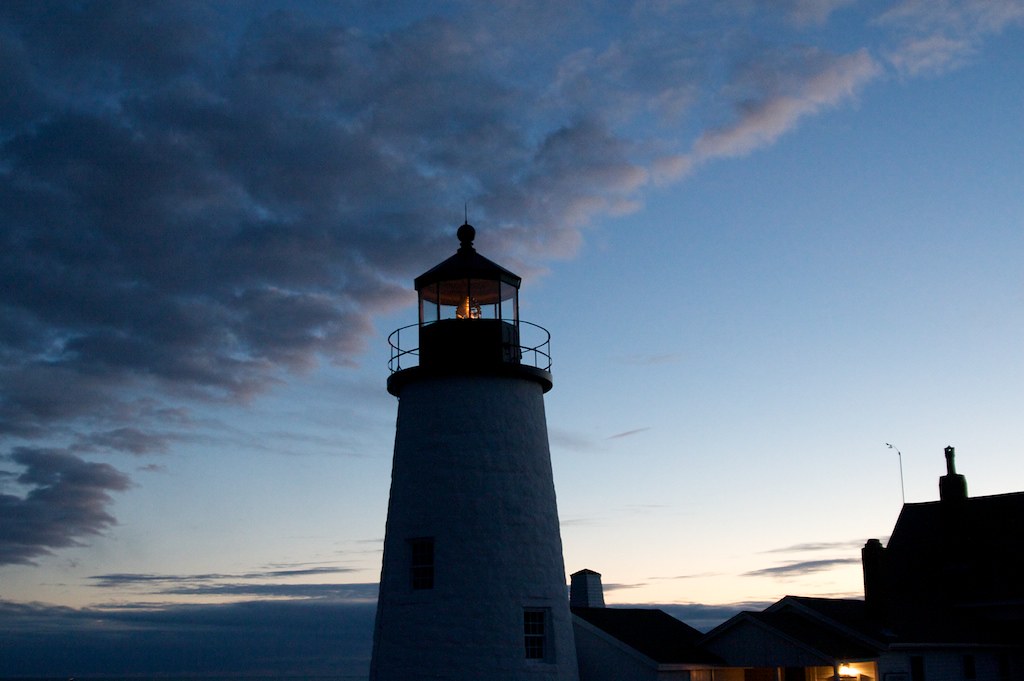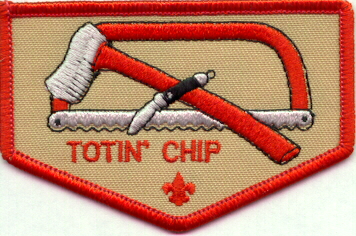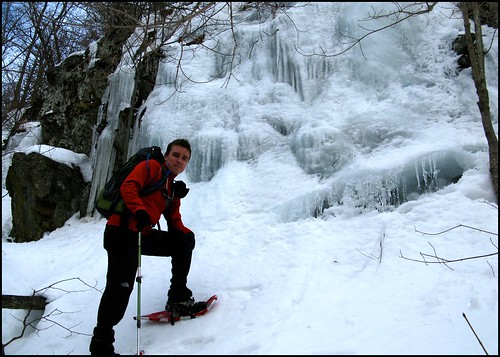 Standing in front of some steep ice on the trail.
Standing in front of some steep ice on the trail.While I wouldn't consider myself a morning person by any stretch of the imagination, I do enjoy the feeling of getting up early to hit the trail (or generally do anything outside). This was the case this past Saturday, with a fresh cup of
BoJoe and a egg/cheese/bacon bagel.
Little Devil's Staircase is located just north of Sperryville, near Washington. Continue down a winding country road (Gid Brown Hollow Road) onto a gravel road (Keyser Run Road), past the state maintenance line, to a tiny lot right at the trailhead.
This was my first time on snowshoes, and it was a helluva of a hike.
Silver Spring Wanderer loaned me a pair of slightly under-sized snow shoes. Under-sized or not, 2" of sinking is better than 18" (or more). After about 10 minutes on the trail, I knew I was in for a workout. Fortunately, we found that while the lower elevations had soft/wet/heavy snow, the higher we moved, the crispier the snow, and the less sinking.
 Heading uphill on the trail with great weather.
Heading uphill on the trail with great weather.Chad the crazy man had been in these parts recently doing some backcountry alpine skiing (ski the East, as he says). We found remnants of his presence all up and down the trail and slops in the form of ski tracks. It's pretty impressive that he was navigating through such tight confines between the mountain laurel and trees.

Chad's uphill tracks as we were headed down the Keyser Run Fire Road.We saw a variety of animal tracks, including deer, rabbit, various birds, and we believe to be bobcat as well. We also came across a fairly fresh deer kill -- we're thinking from coyotes. It's amazing how nothing goes to waste -- I'm guessing the deer was killed in the last couple of days, and every bit of flesh was gone, even off of the mandible.
 Deer skeleton. Self-explanatory.
Deer skeleton. Self-explanatory.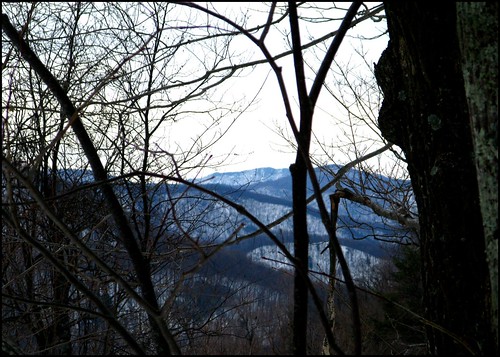 Caught a glimpse of the summit of Old Rag from a distance.
Caught a glimpse of the summit of Old Rag from a distance.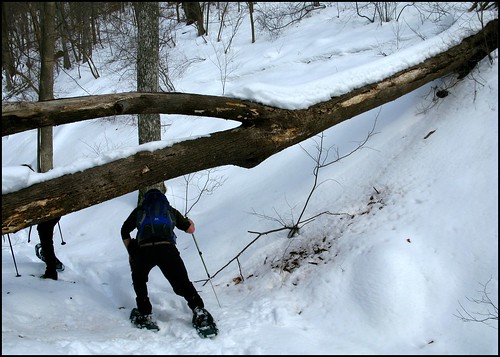 Dodging freshly fallen timber.
Dodging freshly fallen timber.As a note to myself and any other new snowshoer, here is some advice:
- Plan on half your normal hiking pace.
- Wear gaiters and sturdy waterproof boots.
- Wear water-resistant pants. The faster you move, the more you're gonna kick up snow everywhere.
- Use ski or trekking poles. Once you lose your balance, you're going down. The poles won't stop this from happening, but they certainly help.
As we were hiking, I was also thinking about the
recent rescue/evac of the Navy helicopter that went down in WV. They must've been dealing with snow at least as deep as what we had. I can't imagine how difficult the process was of not only finding the crash, but treating, assessing, and then transporting the non-ambulatory to a point where they could be evacuated by motor vehicle. Based on the description of the crash, it was 100 miles south of Camp Dawson, WV, which would put it about in Monongahela National Forest. I believe some areas in the National Forests allow off-road vehicles, which would have certainly help the process.
At any rate, it was a great day, and I'm done rambling.
 A parting shot from Flint Hill, VA. There was a great sunset, alas I didn't capture it quite how I had envisioned.
A parting shot from Flint Hill, VA. There was a great sunset, alas I didn't capture it quite how I had envisioned.







